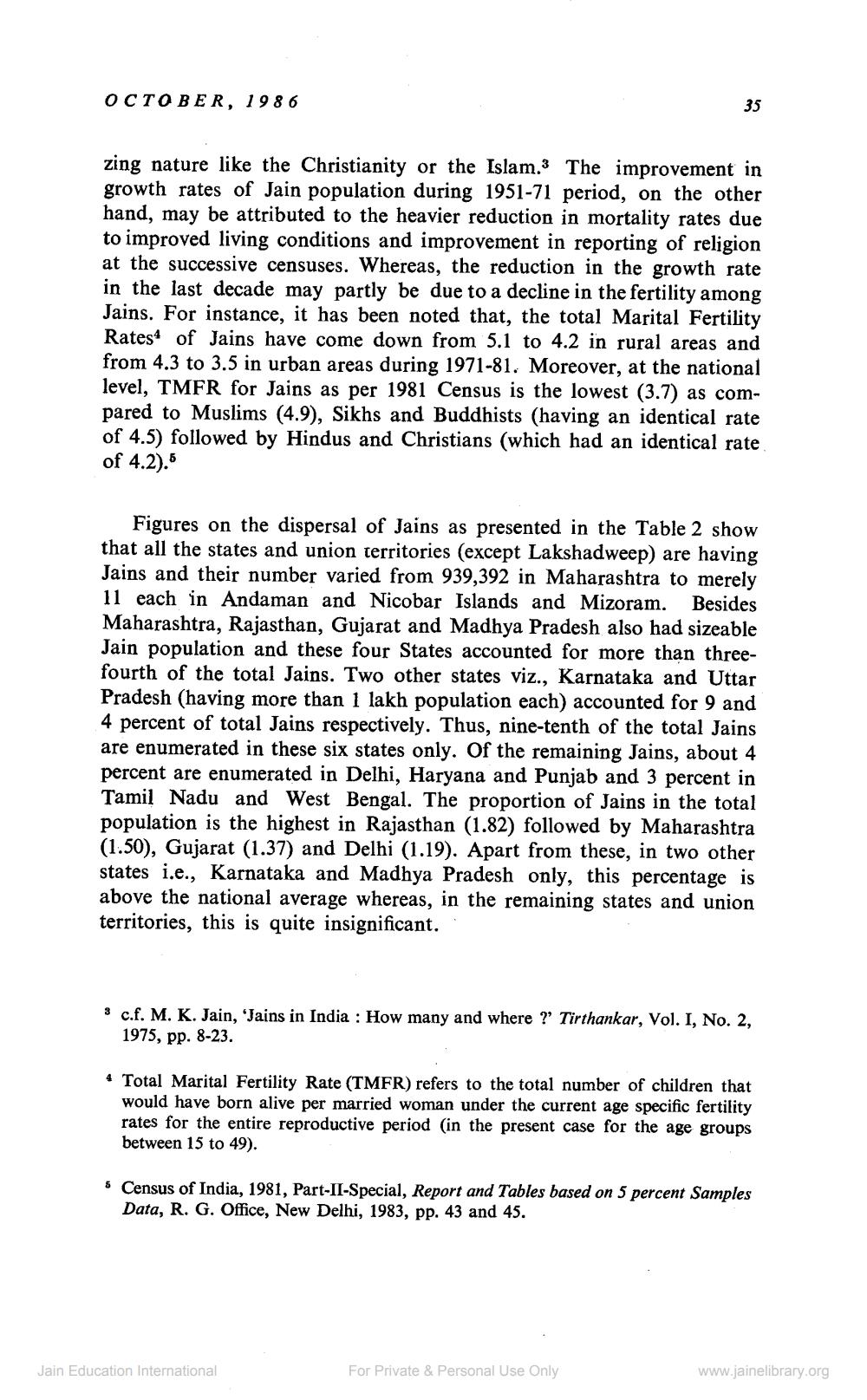Book Title: Jain Journal 1986 10 Author(s): Jain Bhawan Publication Publisher: Jain Bhawan Publication View full book textPage 5
________________ OCTOBER, 1986 zing nature like the Christianity or the Islam.3 The improvement in growth rates of Jain population during 1951-71 period, on the other hand, may be attributed to the heavier reduction in mortality rates due to improved living conditions and improvement in reporting of religion at the successive censuses. Whereas, the reduction in the growth rate in the last decade may partly be due to a decline in the fertility among Jains. For instance, it has been noted that, the total Marital Fertility Rates4 of Jains have come down from 5.1 to 4.2 in rural areas and from 4.3 to 3.5 in urban areas during 1971-81. Moreover, at the national level, TMFR for Jains as per 1981 Census is the lowest (3.7) as compared to Muslims (4.9), Sikhs and Buddhists (having an identical rate of 4.5) followed by Hindus and Christians (which had an identical rate of 4.2).5 Figures on the dispersal of Jains as presented in the Table 2 show that all the states and union territories (except Lakshadweep) are having Jains and their number varied from 939,392 in Maharashtra to merely 11 each in Andaman and Nicobar Islands and Mizoram. Besides Maharashtra, Rajasthan, Gujarat and Madhya Pradesh also had sizeable Jain population and these four States accounted for more than threefourth of the total Jains. Two other states viz., Karnataka and Uttar Pradesh (having more than 1 lakh population each) accounted for 9 and 4 percent of total Jains respectively. Thus, nine-tenth of the total Jains are enumerated in these six states only. Of the remaining Jains, about 4 percent are enumerated in Delhi, Haryana and Punjab and 3 percent in Tamil Nadu and West Bengal. The proportion of Jains in the total population is the highest in Rajasthan (1.82) followed by Maharashtra (1.50), Gujarat (1.37) and Delhi (1.19). Apart from these, in two other states i.e., Karnataka and Madhya Pradesh only, this percentage is above the national average whereas, in the remaining states and union territories, this is quite insignificant. 3 c.f. M. K. Jain, Jains in India : How many and where ? Tirthankar, Vol. I, No. 2, 1975, pp. 8-23. 4 Total Marital Fertility Rate (TMFR) refers to the total number of children that would have born alive per married woman under the current age specific fertility rates for the entire reproductive period (in the present case for the age groups between 15 to 49). 5 Census of India, 1981, Part-II-Special, Report and Tables based on 5 percent Samples Data, R. G. Office, New Delhi, 1983, pp. 43 and 45. Jain Education International For Private & Personal Use Only www.jainelibrary.orgPage Navigation
1 ... 3 4 5 6 7 8 9 10 11 12 13 14 15 16 17 18 19 20 21 22 23 24 25 26 27 28 29 30 31 32 33 34 35 36 37 38 39 40
